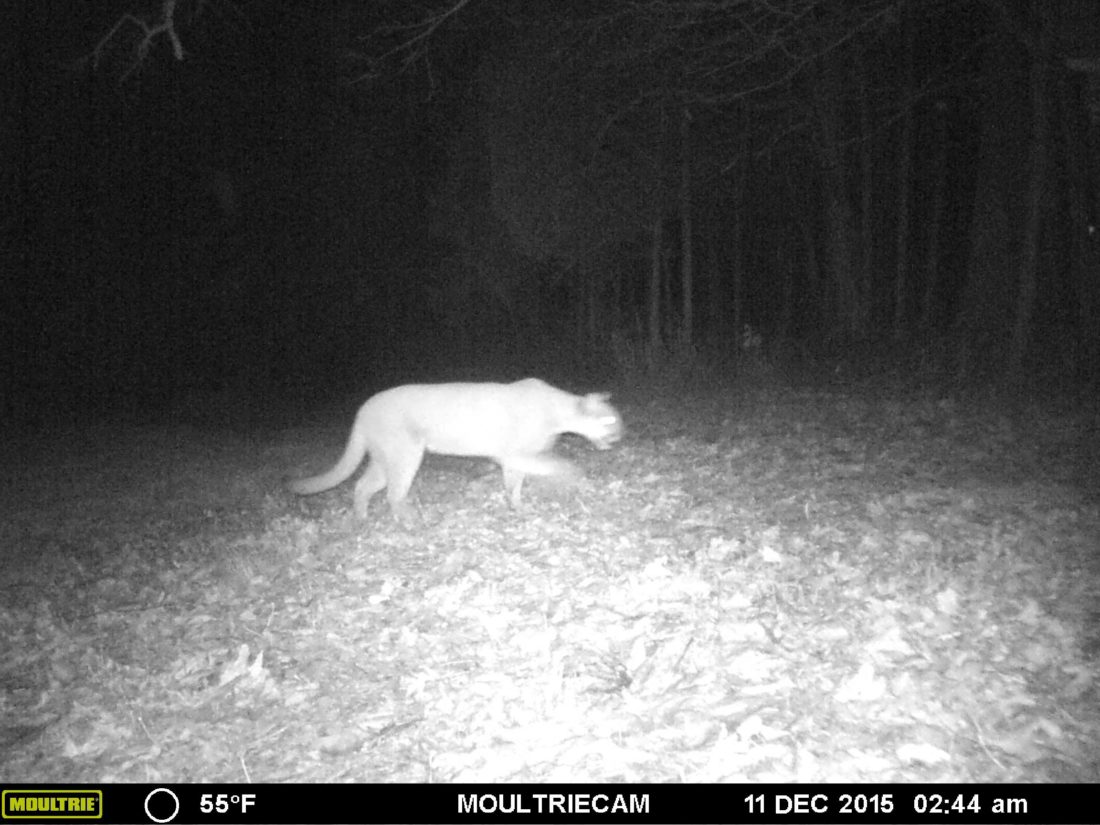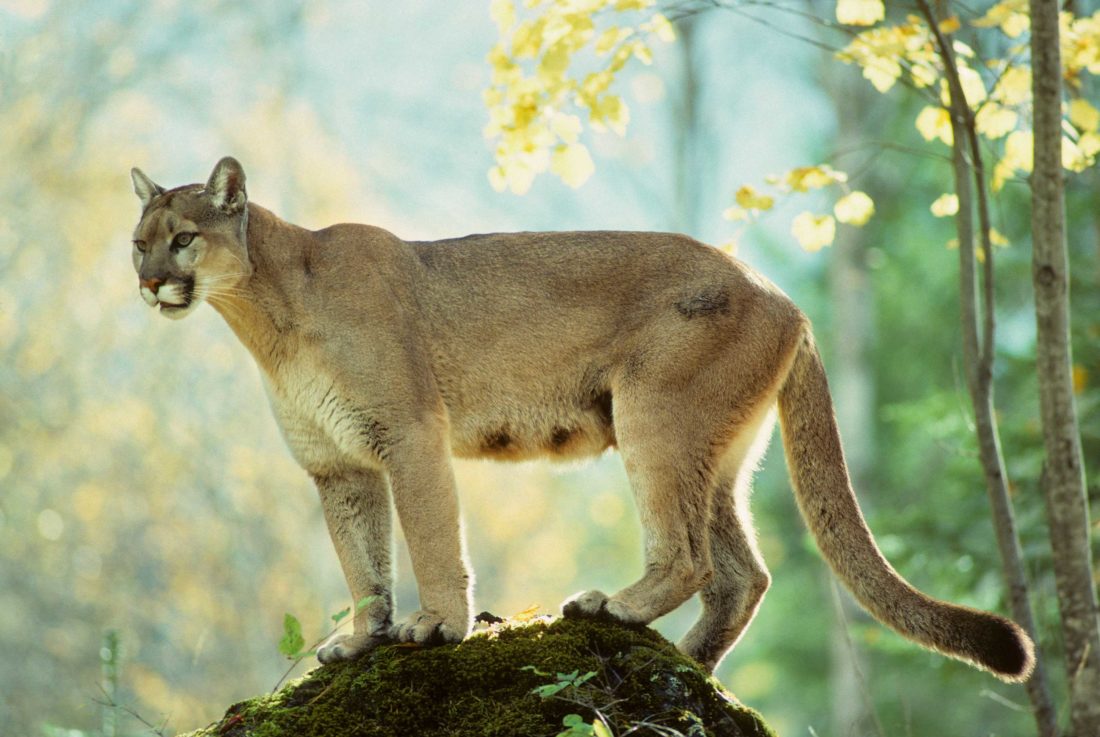The scream came from the woods. It was a snowy night in February, 1916, and Tom Sparks, a rancher and part-time moonshiner, was walking the trail back to his cabin, in a remote pasture in what is now the Great Smoky Mountains National Park, 500,000-plus acres of wilderness along the North Carolina-Tennessee border. Another scream soon followed. But it was closer now. Sparks had stopped by this point. Something was following him, he was sure. But he didn’t know what. He hadn’t intended to be gone very long that evening, so he had brought neither his gun nor his dogs. He took out his folding knife. Then, without warning, the panther lunged. It knocked him backward, and bit his wrist and his elbow. But Sparks managed to stab it twice. The animal jumped off him and vanished into the thicket. Bleeding badly, Sparks dashed for his cabin. The panther followed. It grabbed hold of his coat, and Sparks sunk his blade into the cat again. It released him and disappeared, this time for good. “Sparks showed me the scars on his arm and body,” Horace Kephart, author of Our Southern Highlanders later reported. “They were made by large teeth and claws, beyond doubt.” Kephart suspected that Sparks was telling the truth about the incident. Four years later, a man named Mr. W. Orr killed a panther near what is now Fontana Village, about 20 miles from Sparks’s cabin. The scars found on its body, it was said, matched those left by Sparks’s blade. The animal was the same. The last panther in the Great Smoky Mountains was dead.
For the past hundred years, many Southerners have believed a version of this story about the fate of the panther—otherwise known as the cougar, puma, or mountain lion—in the Great Smoky Mountains. A few years after the attack, the panther was pronounced extinct in the region. But for as long as officials have maintained that the panther is no more, scores of park visitors and locals have insisted otherwise. The debate continues today and has recently been fueled by confirmed panther sightings elsewhere in Tennessee. So where does the truth lie?
Donald Linzey is a wildlife conservation instructor at Virginia Tech who has dedicated 40 years to studying panthers and other mammals in the Smokies. Each year, he investigates from six to eight purported cougar sightings in the park. Many of the reports aren’t credible, he says. But the validity of others is hard to deny—such as when a Knoxville veterinarian, who had treated captive cougars at his practice, spotted one crossing Highway 441 a few years ago. All told, since 1970, Linzey and his team have deemed nearly 200 reports of panthers in the Smokies reliable, he says, along with the credible sightings, photos, and other evidence, such as footprints preserved in mud, confirm that panthers have lived or passed through the park, at least for a short time. But despite the evidence that he has unearthed, there’s reason to doubt whether a sustainable population of panthers still roam the Smokies.

Photo: National Park Service
The Great Smoky Mountains.
Over the years, Linzey has set out rubbing pads from one end of the park to the other, in hopes of collecting hair of panthers passing by. “We’ve gotten bobcat; we’ve got bear; we’ve got hog; we’ve got lots of different mammals,” he says. “We just haven’t been able to get any cougar hair.” Trail cameras have proved no more effective. Because of a lack of DNA evidence, Linzey has said that he doubts there’s still a breeding population of big cats in the park. In 1984, a Clemson University researcher attributed the years’ worth of sightings to non-native panthers from the Midwest that had migrated to the park; captive animals that had been released into the wild; or simply false identifications by witnesses—or a combination of them all. But there’s no way to know for sure. “Until we get more evidence, preferably DNA, we’re not going to know where those animals actually came from,” Linzey says.
Over the past three years, a growing number of people have come to believe that, if there are indeed panthers in the park, they likely came from the Midwest, a phenomena that has been well documented elsewhere in the country. To wit, in 2015, the Tennessee Wildlife Resource Agency confirmed, for the first time in 100 years, the presence of mountain lions in Tennessee, after a man in Humphreys County—west of Nashville and about 300 miles from the Smokies—captured photos of one on a trail camera. That same year, in Carroll County, DNA from hair samples definitively linked a female panther to populations in South Dakota. There now have been a total of ten confirmed cougar reports in Tennessee. But so far, the TWRA has yet to verify a panther sighting in East Tennessee or the Smokies, much less whether one that may or may not be there originated locally or moved in from elsewhere. The TWRA also notes that there’s no proof that the panthers west of Nashville are there to stay. “Considering that there are large expanses between Tennessee and the established populations, it will likely be a long time before cougars make their home here,” reads the agency’s website.

Photo: Courtesy of TWRA trail cam
A cougar sighting in Humphreys County, Tennessee, from December 2015.
There’s a chance, however small, that native panthers remained in the park in the years following the Sparks attack. The debate largely hinges on whether a breeding population survived in a crucial window from about 1900 to 1950, when poaching went largely unchecked and food was in short supply. In 1938, a park naturalist wrote that no cougars could exist in the park because deer were so scarce. Yet the number of panther sightings increased over the following years. In 1977, the the National Park Service conducted a large-scale study to get to the bottom of whether the reports were true. It concluded that panthers may have never gone extinct in the Smokies and had survived in small numbers in inaccessible, mountainous areas. There was insufficient proof, however, that breeding populations existed.
Forty-odd years later, the mystery remains much where the NPS study left off. The panther that attacked Sparks that cold February night in 1916 may well have been the last native cat in the park. Or not. But what’s certain is that the quest to find them there is far from over.








